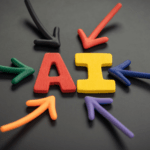Effective assessment is a foundational requirement of the educational process, ensuring that learners can demonstrate their understanding and skills fairly and transparently. Effective feedback becomes even more critical in vocational training, where practical skills and real-world application are paramount. Feedback helps learners identify their strengths and areas for improvement and provides essential guidance for their professional development. It encourages continuous learning, enabling learners to refine their skills and align their performance with industry standards. To facilitate this, a wide range of information should be made available to learners and educators, assessors, and other stakeholders involved in the assessment process.
Standards and Criteria for the Assessment
Understanding assessment benchmarks is necessary. This includes:
- Learning objectives: These statements specify what learners should know, understand, and be able to do by the end of a course or programme. They align teaching and assessment activities with desired outcomes. Educators should present these objectives and regularly reference them at the course’s start, ensuring all activities target these goals.
- Assessment criteria: These define the standards expected for different performance levels. Clear criteria help learners understand what is required for various grades. Educators should provide marking or scoring guides that detail assignment components and expectations for each. Sharing past exemplars that meet these criteria can also aid understanding.
- Grade descriptors: These descriptions explain what constitutes different grades or achievement levels. They offer a qualitative understanding of what separates high-performing submissions from lower-performing ones. Educators should provide detailed descriptors for each grade level, ensuring they are accessible and consistent in grading.
Types of Evidence Required and Methods to be Used
Learners need clarity on the evidence required to demonstrate competencies. This includes:
- Types of assignments: Examples include essays, projects, presentations, exams, or practical tasks. Informing learners about assignment types helps them prepare and develop the necessary skills. Educators should provide detailed descriptions, including objectives, length, format, and specific guidelines.
- Submission formats: Clear instructions on whether submissions should be digital or physical, the required file formats, and any technical requirements are essential. This ensures correct submissions and avoids technical issues. Step-by-step guides for submission processes and technical support can be beneficial.
- Examples of acceptable evidence: Providing samples of high-quality submissions helps learners understand the expected standards and effective evidence types. Diverse examples covering various achievement levels can guide learners in their preparation.
Practical Arrangements
Logistical details ensure smooth assessment execution and avoid misunderstandings. Key information includes:
- Dates and deadlines: Precise submission deadlines and key assessment dates should be communicated beforehand. This helps learners plan their workload and manage time effectively. A centralised calendar or timetable with regular reminders can be useful.
- Locations and times: For in-person assessments, detailed information about venues and times ensures learners know where and when to be. This includes room numbers, building locations, and specific instructions. Online assessments should also have clear timing and platform instructions.
- Resources and materials: Information on what materials learners must bring or prepare are essential. This might include specific books, tools, equipment, or digital resources. Checklists or resource guides can help learners ensure they have everything needed.
How Feedback Will Be Given
Feedback is vital for learners’ development. Information should cover:
- Feedback timelines: Indicating when and how learners will receive feedback helps manage expectations and planning. Educators should commit to specific timeframes and provide updates if delays occur.
- Feedback formats: Clarifying whether feedback will be verbal, written, or through digital platforms helps learners understand how they will receive and interpret it. Detailed feedback should highlight strengths, areas for improvement, and specific enhancement suggestions.
- Opportunities for discussion: Information on how learners can seek clarification or discuss their feedback with assessors is important for deeper understanding. Offering office hours, feedback sessions, or digital forums can facilitate these discussions.
Use of Assessment Outcomes and Records
Learners and stakeholders need to understand how assessment results will be utilised. This includes:
- Recording and reporting: Clear information on how and where assessment outcomes will be recorded and reported ensures transparency. This might include academic transcripts, digital records, and reporting systems used by the institution.
- Impact on progression: Explaining how results affect learners’ progression or future opportunities, such as advancement to higher study levels, eligibility for specific programmes, or career prospects, helps learners understand their assessments’ significance.
- Confidentiality and data protection: Assurances regarding the privacy and security of assessment records are essential. Institutions should outline their data protection policies clearly, ensuring learners know their personal and academic information is secure.

Additional Useful Information
Assessment Policies and Procedures
- Academic integrity: Guidelines on plagiarism, cheating, and other academic misconduct forms help maintain fairness and trust in the assessment process. Educators should provide clear definitions, examples, and consequences of misconduct alongside strategies for maintaining academic integrity.
- Appeals process: Clear steps for learners to appeal against an assessment decision, ensure they understand their rights and the process for challenging decisions. Detailed guides and support services should assist learners through the appeals process.
Support and Resources
- Learning support services: Information about available tutoring, counselling, or other support services can enhance learners’ success. Institutions should actively promote these services and provide easy access to them.
- Access to materials: Clear information on accessing libraries, databases, or other learning resources ensures learners have the necessary study tools. Online portals and resource guides can be helpful.
Adaptations and Accommodations
- Special arrangements: Information on requesting and available accommodations for learners with disabilities or special needs ensures inclusivity. Detailed procedures for requesting accommodations and examples of possible adjustments should be provided.
Roles and Responsibilities
- Assessor roles: Information about who will assess the work and their qualifications helps build trust in the assessment process. Providing brief profiles or qualifications of assessors can reassure learners about the assessment team’s expertise and fairness.
- Learner responsibilities: Clearly outlining what is expected of learners regarding preparation, participation, and conduct during the assessment process helps set expectations and encourages responsible behaviour. This can include guidelines on communication, submission etiquette, and collaboration protocols.
Conclusion
Comprehensive and transparent information about the assessment process promotes a fair and supportive learning environment. Educational institutions can enhance assessment practices’ effectiveness and credibility by ensuring learners and all involved parties have access to detailed information about standards, evidence requirements, practical arrangements, feedback mechanisms, and assessment outcomes. Additionally, insights into assessment policies, support resources, accommodations, and roles ensure the entire process is inclusive and well-understood by all stakeholders.






